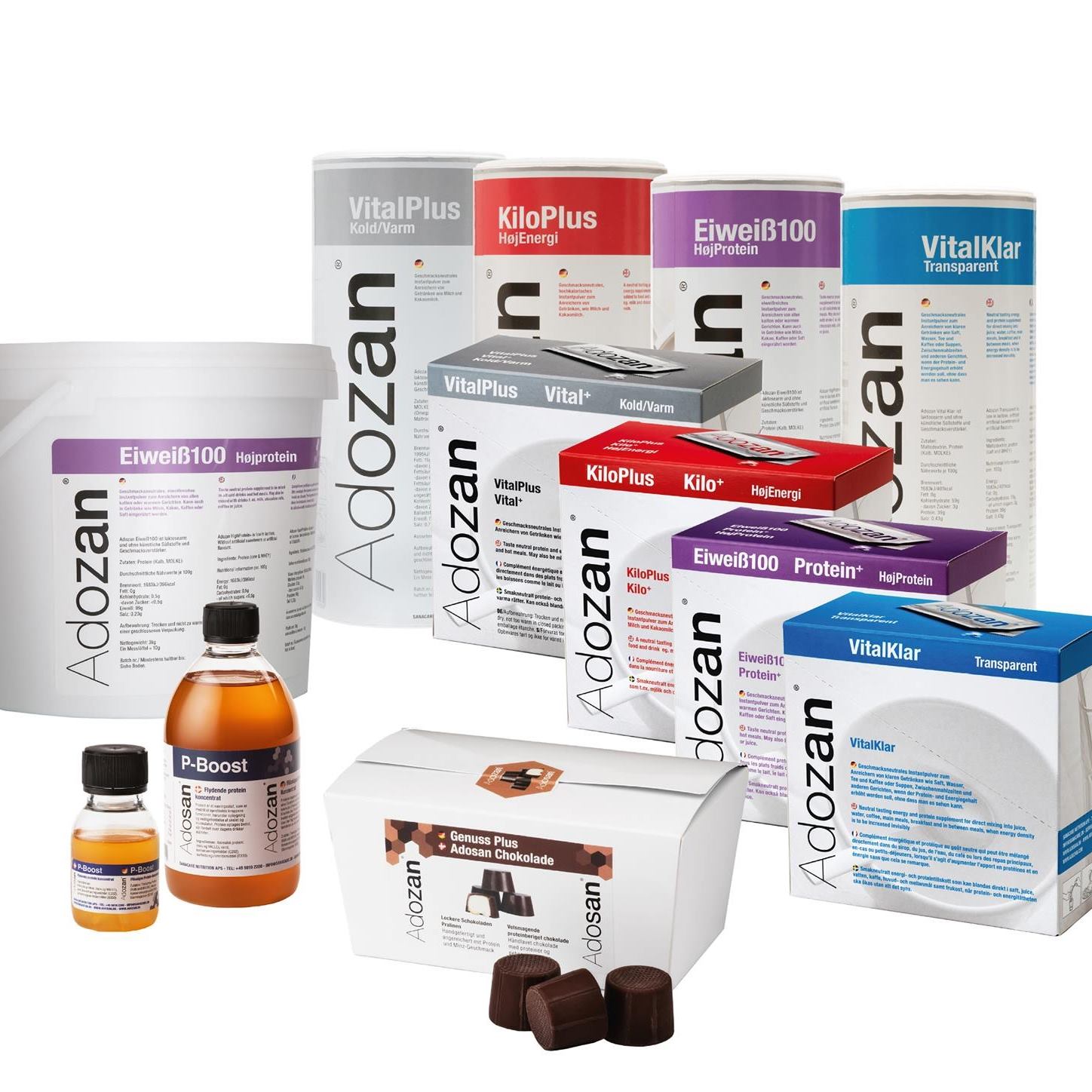Protein needs
Proteins are the body's LEGO bricks. Proteins build cells, tissues, hormones, antibodies and enzymes and they are indispensable for maintaining muscle and bone mass and thus function and self-reliance.
Healthy people's need for protein is 0.8 g per kg. body weight. People with a chronic illness have a protein requirement that is between 1.0-1.5 g/kg, and people with an acute/severe illness have a protein requirement that is between 1.3-1.8 g/kg (National Health Authority , 2015).
In addition, there are diseases such as COPD and Parkinson's, where the recommendation is 1.2-1.5 g/kg. These diseases are often seen in the elderly.
For older (healthy) people (>65 years) 1-1.5 g/kg is recommended. Studies show that 0.8 g/kg has shown loss of thigh muscle in older people (Hessov, I. & Jeppesen, PB, 2012)
Based on an elderly person with a protein requirement of 1.3 g/kg and a weight of 65 kg, this gives 84.5 g of protein per day. This protein intake can be obtained by, for example, eating the following during the day:
- 1 egg
- 50 g of cheese
- 100 g yogurt
- 150 g chicken fillet
- 20 g nuts
- 4 glasses of milk
If you are a picky eater, it will almost be an insurmountable task to consume such a large amount of food, if the other nutritional needs for carbohydrate, fiber and fat are also to be covered. Furthermore, it will often be a big challenge to meet BOTH protein needs and energy needs, and if the energy needs are not met, the proteins are used for combustion instead of benefiting muscles and cells.
Protein quality
Proteins are made up of amino acids. Some amino acids can be produced by the body itself. Others must be supplied via the diet (essential amino acids).
There are different methods for assessing the protein quality of products. The most recognized is the DIAAS (Digestible Indispensable Amino Acid Score). This is a comprehensive method, as it requires knowing the digestibility of the protein source in question in the small intestine.
Therefore, AAS (Amino Acid Score) is often used instead, as that method still gives a good insight into whether the product contains all essential ammonium acids, but the method therefore does not take into account the digestibility of these.
At Adozan, we have a lot of focus on protein quality, and all products contain all essential amino acids and have a good AAS, which is evident from all data sheets. However, we value function and taste just as much as quality, as a high DIAAS score can cause functional challenges. In addition, the DIAAS score is always increased when the product is used in food and drink that also contains essential amino acids (e.g. dairy products, meat, beans, lentils etc.)
We have developed Adozan DIAAS 96 based on whey and maltodextrin in order to have a product with a high DIAAS which can stand alone, e.g. in a glass of juice or juice or in mashed potatoes, which do not already contain very many essential amino acids. However, the product is limited at a maximum temperature of 75 degrees.
If you instead want the product to be able to withstand boiling, you can advantageously choose Protein+Hot based on whey and collagen, which does not have as high a DIAAS score, but which will nevertheless, as a general rule, be combined with dishes that already contain essential amino acids and thus DIAAS is increased.
If you are in doubt as to which product is right for you, you may find help in our little guide here . You are also always welcome to contact clinical dietitian Majbritt Blume-Hellesøe at mbh@sanacare.dk.
Sources:
Hessov, I. & Jeppesen, PB, 2012, Clinical Nutrition, Munksgaard
The Danish Health and Food Administration, 2015: Recommendations for the Danish institutional diet




